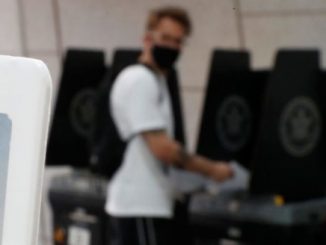In light of ongoing efforts to mitigate the effects of the COVID-19 pandemic and equitably distribute available vaccines, the Office for Civil Rights (OCR) at the U.S. Department of Health and Human Services (HHS) is providing this guidance to ensure that entities covered by civil rights laws understand their obligations under federal law and regulations that prohibit discrimination on the basis of race, color and national origin (including language spoken).
President Biden’s National Strategy for the COVID-19 Response and Pandemic Preparedness – PDF outlines comprehensive action steps by the federal government to respond to the COVID-19 pandemic. One of the goals of this strategy is to “protect those most at risk and advance equity, including across racial, ethnic and rural/urban lines” by addressing “disparities in rates of infection, illness and death.” Title VI of the Civil Rights Act of 1964 (Title VI) and Section 1557 of the Affordable Care Act (Section 1557) require that federally assisted health care providers and systems ensure fair, equitable access to vaccines. This access must also be free from discriminatory barriers that limit a communities’ ability to receive vaccinations because of race, color, or national origin (including language spoken).
Background
People of color have been disproportionately impacted by the COVID-19 pandemic with respect to infection rates and mortality, compared to their White counterparts. Additionally, recent data indicate that despite the expansion of vaccines available to all individuals, including children over the age of 5, vaccination rates for certain groups, particularly Blacks and Latinos, are lower compared to their share of the population and their rates of infection and/or mortality. Additionally, the same disparities exist with respect to COVID-19 booster shots which have been approved by the CDC for all adults over the age of 18. Based on available demographic data, fully vaccinated White people appear more likely to have received a booster shot compared to other racial/ethnic groups. Data further suggest that years of discrimination have contributed to these and other long-standing health care disparities and that these disparities are one of the drivers of the COVID-19’s substantial toll on Black, Native American, Latino, and Asian and Pacific Islander persons.
Executive Order 13995, Ensuring an Equitable Pandemic Response and Recovery
Executive Order 13995, Ensuring an Equitable Pandemic Response and Recovery expressly requires federal agencies, including HHS, to “assess pandemic response plans and policies to determine whether personal protective equipment, tests, vaccines, therapeutics, and other resources have been or will be allocated equitably.” The order further mandates federal agencies to “strengthen enforcement of anti-discrimination requirements pertaining to the availability of, and access to, COVID-19 care and treatment.” This order reinforces OCR’s core mission of enforcing Title VI and Section 1557 and provides a specific mandate to ensure equal access to COVID-19 vaccination. As the Department’s civil rights law enforcement agency, OCR has a particularly important role in ensuring that equity is at the center of all its enforcement efforts.
Potential Contributors to COVID-19 Disparities Among People of Color
Several factors may have contributed to disparities in COVID-19 infection and mortality rates among people of color. Research indicates that many social, economic, and environmental factors can contribute to disparities in COVID-19 infection and mortality rates within communities of color. In general, these factors can be grouped into three categories: (1) disparities in exposure (e.g. overrepresentation in the essential workforce, increased reliance on public transportation); (2) disparities in susceptibility (e.g. higher incidence of intergenerational households, limited access to potable water, disproportionate allocation of resources such as education and health services, disproportionate incarceration rates, increased likelihood of exposure to lead and air pollution); and (3) disparities in healthcare treatment and access (e.g. health insurance coverage, affordability of care, access to video remote care in rural areas, health literacy and access to nutritious food). These factors are especially prevalent in Asian, Pacific Islander, American Indian, Alaska Native, Black, and Latino communities who are concentrated in major urban centers and rural areas, including reservations.
Studies have also shown that Black and Latino persons are more likely than the general population to delay or refuse to get a vaccine because of medical mistrust, history of racial discrimination, exposure to myths and misinformation, perceived risk of getting infected with COVID-19, beliefs about vaccines and past vaccine compliance, and concerns about the safety and side effects from the COVID-19 vaccines.
Protections from Discrimination on the Basis of Race, Color and National Origin
OCR enforces Title VI and Section 1557, which prohibit discrimination on the basis of race, color, and national origin (including language) in programs and activities receiving Federal financial assistance, including health programs and activities. These provisions may apply to any federally assisted entity involved in the vaccine distribution process, including, but not limited to, hospitals, health clinics, state or local public health authorities, pharmacies, mobile vaccine units, and nursing homes and/or long term care facilities. Covered programs generally cannot distinguish among individuals on the basis of race, color or national origin (including language), either directly or indirectly, in the types, quantity, quality or timeliness of program services, aids or benefits that they provide or the manner in which they provide them.
Example #1: A state or local public healthcare authority or federally assisted health care provider that establishes a policy or procedure that provides priority to vaccines based on race, color, or national origin, including language spoken, without a legitimate non-discriminatory reason for doing so would violate Title VI and Section 1557.
Title VI and Section 1557’s anti-discrimination provisions also apply to procedures, criteria, and methods of administration that are facially neutral but have a discriminatory effect on individuals because of their race, color, or national origin. Policies and practices that have such a discriminatory effect must be eliminated unless a recipient can show that they were necessary to achieve a legitimate nondiscriminatory objective. Even if there is such a reason, the practice cannot continue if there are alternatives that would achieve the same objectives but without discriminating on the basis of race, color, or national origin (including language spoken).
Example #2: Inflexible requirements that vaccines should be distributed solely by pharmacies or that vaccination appointment registration must be conducted online could limit vaccine access to communities of color located in “pharmacy deserts” or where there is insufficient access to affordable internet services. Even if there was no intent to discriminate against communities of color, this type of policy could have a disparate impact on the basis of race, color, or national origin.
Legal Requirements & Best Practices for Equitable Vaccine Access under Title VI and Section 1557
To ensure Title VI and Section 1557 compliance by recipients of Federal financial assistance, including state and local agencies, hospitals and health care providers administering vaccines, covered entities must comply with the following legal requirements in their vaccine programs:
- Ensure that individuals are not subjected to discrimination because of their race, color, or national origin (including language spoken). For example, if a vaccine program has excessive wait times for vaccine distribution or inferior facilities for vaccine administration in Black communities as compared to distribution or facilities in predominately White communities, this may constitute discrimination under Title VI and Section 1557.
- Make available to all patients, program beneficiaries, and customers, in a language they understand, information that the recipient does not discriminate on the basis of race, color, or national origin (including language) in accordance with applicable laws and regulations. For example, a federally assisted healthcare program should ensure that it translates notices alerting a Spanish-speaking limited English proficient community about the nondiscrimination provisions within Title VI and Section 1557.
- Provide information to individuals, in a language they understand, about how to file a complaint if they believe they have been subjected to discrimination.
The following is a list of best practices to advance and improve equitable vaccine administration. Vaccine providers, including State and local health departments, should take proactive steps to ensure non-discrimination, including the following:
- Review Policies: Review relevant vaccine policies and procedures to ensure economically and socially marginalized groups have access to vaccine programs in their service areas, including urban and rural communities that have inadequate or substandard access to private health care facilities, hospitals, and pharmacies. For example, vaccine providers should post clear, easy-to-follow instructions, in a language understood by the relevant population, about how to make an appointment along with information on which vaccines are available at the site.
- Manage Data: Collect, improve, and maintain accurate and detailed data for communities targeted for vaccine distribution to ensure groups that have been economically or socially marginalized receive equal access, and track demographic data for individuals who have received vaccines to help keep track of this access. Particular emphasis should be placed on disaggregated data for racial and ethnic minorities, especially Asian and Pacific Islander communities which are culturally and linguistically diverse.
- Partner with Organizations: Partner with civil rights organizations, faith-based groups, civic organizations, researchers, and advocacy groups to design effective, linguistically and culturally competent communication, messaging, and outreach to people who are medically underserved, with particular emphasis on communities that are hesitant to get a vaccine. For example, vaccine providers should consider drafting guidance such as frequently asked questions that address community concerns, including an explanation of how each vaccine works, available research on long-term COVID symptoms, vaccine effects on fertility and reproduction, vaccine effectiveness against different COVID variants, and post-COVID immunity versus vaccination.
- Eliminate Language Barriers: Ensure outreach material and vital information about the vaccines are accessible to limited English proficient individuals to ensure meaningful access to vaccination.
- Allay Immigration Concerns and Fear of Federal Authorities: Conduct targeted outreach to immigrant communities, mixed-status households, and other migrant groups to ensure that all individuals receive a vaccine, regardless of their immigration status. Outreach should emphasize that U.S. Immigration and Customs Enforcement does not and will not carry out enforcement operations at or near health care facilities, such as vaccination sites, hospitals, health clinics, or emergency facilities except in the most extraordinary of circumstances.
- Conduct Outreach: Engage with communities and populations that have limited internet access by using alternative communication methods such as print media, radio, TV, flyers, and door-to-door outreach to provide information about the vaccine and how to get a vaccine.
- Locate Vaccination Sites in Historically Underserved Communities: Encourage entities administering vaccines, particularly those with larger service areas and more sites, to ensure that vaccine distribution sites are located in areas accessible to communities of color living in urban or rural areas where vehicle or public transportation may be a challenge. Vaccine providers may also wish to promote and encourage the use of satellite, mobile, and temporary vaccination locations to reach underrepresented groups. For example, vaccine providers should consider partnering with property managers at multi-family residential properties, including senior living facilities, to host onsite vaccination.
Additional Resources
To learn more about non‐discrimination on the basis of race, color, national origin, sex, age, and disability; conscience and religious freedom; and health information privacy laws, and to file a complaint with OCR, please visit https://www.hhs.gov/ocr/index.html.
For additional communication resources for COVID-19 vaccines, please visit https://www.cdc.gov/coronavirus/2019-ncov/vaccines/resource-center.html.
For additional information on the federal government’s vaccine distribution plans, please visit https://www.hhs.gov/coronavirus/covid-19-vaccines/distribution/index.html.
For Centers for Disease Control (CDC) guidance on planning and establishing vaccination sites, please visit https://www.cdc.gov/vaccines/hcp/admin/mass-clinic-activities/.
For more resources on COVID‐19, civil rights, and health information privacy, please visit https://www.hhs.gov/civil-rights/for-providers/civil-rights-covid19/index.html, https://www.lep.gov/leading-coordinated-civil-rights-response-coronavirus-covid-19#toc-statement-by-the-principal-deputy-assistant-attorney-general-for-civil-rights-april-2-2021, and https://www.hhs.gov/hipaa/for-professionals/special-topics/hipaa-covid19/index.html.
For more resources on COVID-19 and accessibility for people with disabilities, please visit https://www.hhs.gov/sites/default/files/federal-legal-standards-prohibiting-disability-discrimination-covid-19-vaccination.pdf – PDF.
For guidance and resources regarding COVID-19 and people with limited English proficiency, please visit https://www.hhs.gov/sites/default/files/lep-bulletin-5-15-2020-english.pdf – PDF.
For general information regarding COVID‐19, please visit https://www.coronavirus.gov.
Follow OCR on Twitter at @HHSOCR.





Be the first to comment